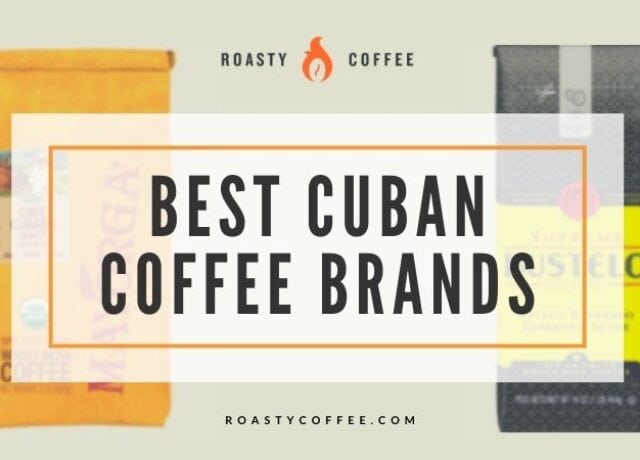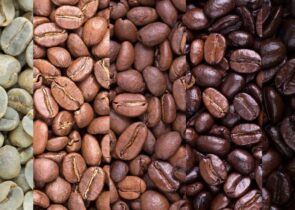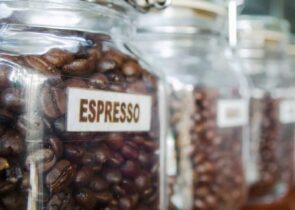If you’ve studied premium java, you’ve probably come across some mention of Sumatran coffee beans at some point. These beans are undeniably unique thanks to their distinctly earthy flavor profile and unusual processing methods.
Coffee drinkers either love or hate this joe, and if you keep reading, you’ll likely discover where you stand with Sumatran coffee. Plus, you’ll find out how producers make this coffee, how it tastes, and which brands sell the best beans from this origin.
At A Glance: Our Top 5 Picks for Sumatra Coffee
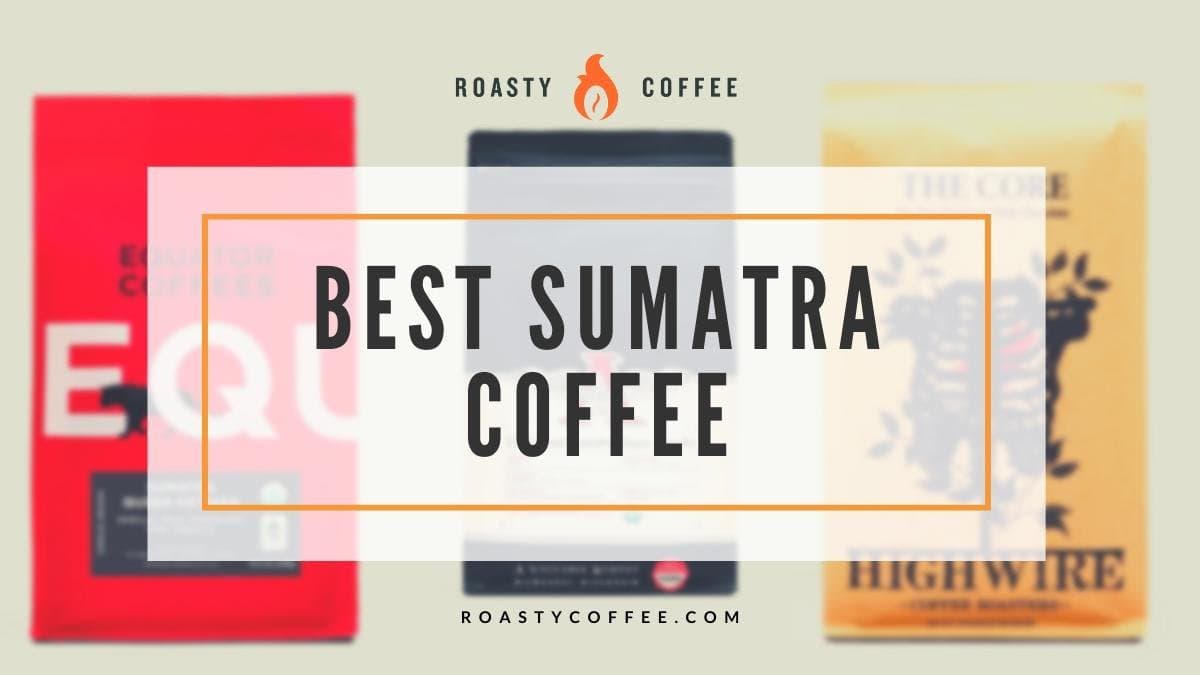
Quick Summary: The Best Sumatra Coffee
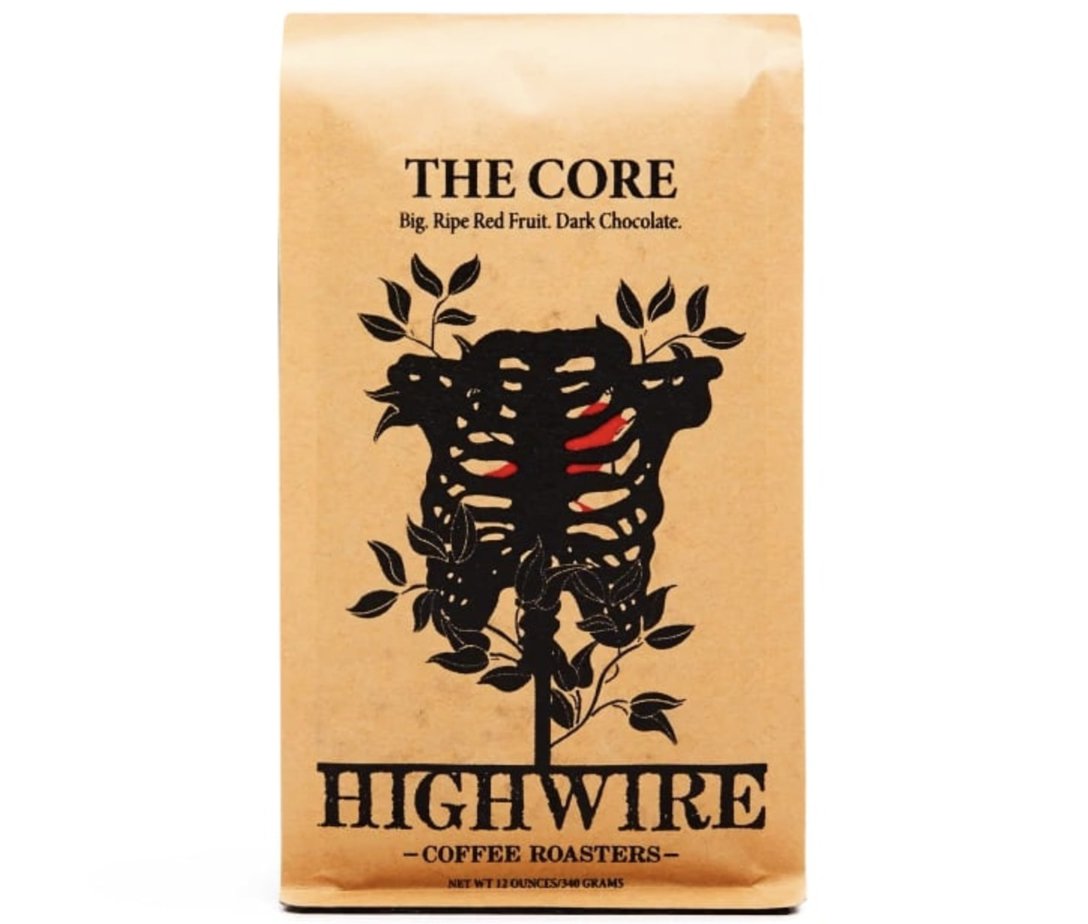 | Our Top Pick Highwire Coffee Roasters - The Core Espresso |
| Check Price → |
 | Bird Rock Coffee Roasters - Bird Rock Blend |
| Check Price → |
 | Oren's Coffee - Oren's Special Blend |
| Check Price → |
 | Equator Coffees - Sumatra Queen Ketiara Coffee |
| Check Price → |
 | Gimme! Coffee - Sumatra Gayo Highlands |
| Check Price → |
 | ANODYNE COFFEE ROASTING CO. SUMATRA GAYO MANDIRI |
| Check Price → |
 | Sumatran Mandheling by Volcanica |
| Check on Amazon → |
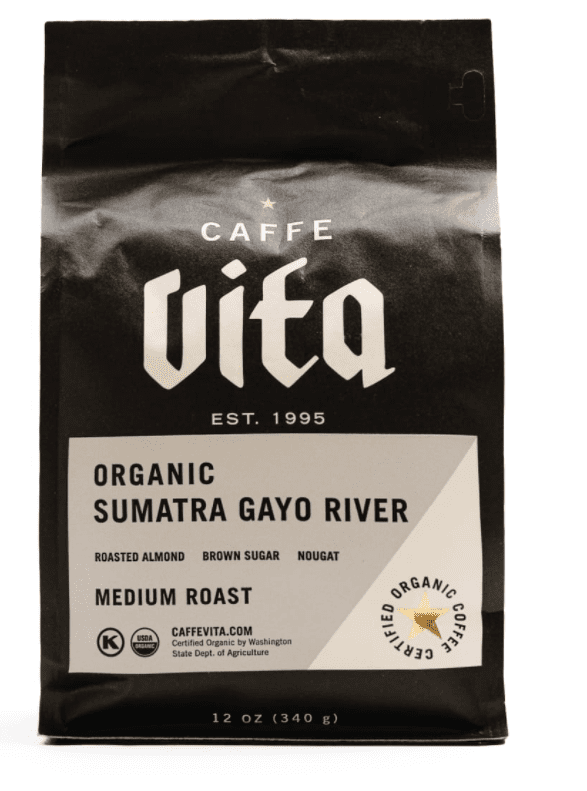 | Caffe Vita Sumatra Gayo River |
| Check Price → |
 | STARBUCKS SUMATRA DARK ROAST |
| Check on Amazon → |
 | SUMATRA GAYO PEABERRY BY VOLCANICA |
| Check on Amazon → |
 | CAMANO ISLAND COFFEE ORGANIC SUMATRA |
| Check on Amazon → |
The Birthplace of Coffee?
We’ll get to our Sumatran coffee brand suggestions, but first, let’s take a closer look at these beans’ origins.
Sumatra is the world’s sixth-largest island and one of Indonesia’s Greater Sunda Islands, alongside Java, Sulawesi, and Borneo. The Dutch brought coffee to Sumatra in 1699, but large-scale coffee production did not begin until 1884. Before this, coffee cherries only grew in the Ethiopian wild.
Coffee growers planted the joe in the fertile soil surrounding volcanic Lake Toba, and the plants flourished, creating what many consider the first roots of the coffee industry we have today. Now, Sumatra is the largest Indonesian coffee producer.
Sumatran Coffee Bean Varieties
Most high-quality Sumatran coffee grows at altitudes between 2,500 and 5,000 feet and generally boasts low acidity, a full body, and an earthy aroma.
It’s not uncommon to find these joes roasted to medium or dark hues. However, nowadays, there’s a push for more light roasts, and brighter-tasting Sumatran brews are rising in popularity.
Sumatran coffee grows in a specific region of Indonesia, but it’s important to note it isn’t the only kind of joe you’ll find in the country. For example, Indonesia is also home to Java coffee, which is so well-known that the word java has become synonymous with coffee. But for the sake of simplicity, we’re exclusively talking about Sumatra’s varieties: Mandheling, Ankola, Lintong, and Gayo/Aceh.
Mandheling
Sumatra Mandheling coffee gets its name from one of the Indonesian island’s tribes and grows in the west-central region near Padang.
Coffee lovers should expect these beans to have a subtle acidity that lends complexity to the brew and spicy notes of cinnamon, nutmeg, and cardamom. Pay close attention as you sip, and you might also detect flavors of chocolate and licorice.
Many consider these the best Sumatran beans out there, but a select few think the Mandheling label is overhyped. But try not to let any opinions sway you too much; only you can decide whether or not this joe is worth it to you.

Ankola
Ankola coffee, characterized by its mellow acidity, grows near the port of Padang somewhere between 2,500 and 5,000 feet above sea level. Ankola beans are dry-processed, unlike the traditional wet method used to process other Sumatran coffees. Dry processing creates a more uniform appearance in these batches of beans and produces a slightly different flavor profile.
Lintong
The Lintong coffee variety is from the north-central Lintongnihuta region near Lake Toba. These beans tend to produce more medium-bodied brews, but they still sport Sumatran coffee’s signature earthiness and notes of cedar and spice.
These brews are best known for balancing the characteristically rich flavor of this region with a clean aftertaste.
Gayo/Aceh
The Gayo region, resting about 4,200 to 5,200 feet above sea level, is named for the nearby Gayo Mountain and is bordered by Lake Tawar. But it isn’t the lake or the mountain that makes the Gayo/Aceh region noteworthy; it’s aged coffee.
You can store Gayo/Aceh beans for months or even years, and the aging allows a flavor profile uncharacteristic of Sumatran coffee to develop. Though not notably better for any definable reason, people place a high value on these beans for their relative rarity and complexity.
Roasty Rankings: Our Top Picks for the Best Sumatran Coffees
We’re big Sumatran coffee fans here, and we’re sure that once you get your hands on a bag of freshly roasted coffee from this country, you will be, too. Check out a few of our favorites!
Highwire Coffee Roasters – The Core Espresso
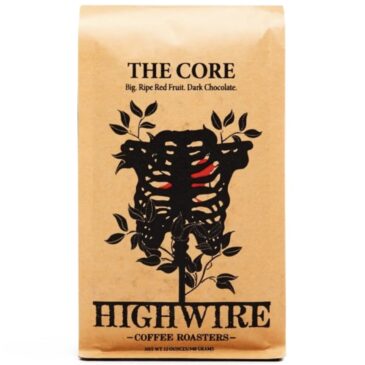
Highwire Coffee Roasters - The Core Espresso
At the core of The Core you’ll find a dense raisin sweetness and spicy chocolate notes that will complement milk nicely or be amplified even further in your espresso.
The Core is Highwire’s signature coffee blend, and with a profile full of ripe red fruit and dark chocolate flavors, it’s easy to understand why. But be warned: if you’re searching for a Sumatran single-origin, this probably isn’t the way to go, as it’s a combination of Ethiopian, Guatemalan, Papua New Guinean, and Sumatran beans.
These versatile, well-rounded beans partner seamlessly with any brewing method, from a French press to a pour-over dripper to an espresso machine. And though you’ll find it tastes delicious black (sans add-ins), the complex brew is just as good with a splash of milk or a spoonful of sugar.
Bird Rock Coffee Roasters – Bird Rock Blend

Bird Rock Coffee Roasters - Bird Rock Blend
Full-bodied, chocolaty, and roasty-toasty; this bold, dark coffee boasts interesting peppery notes that spice up a very comforting cup.
The next time you’re brewing coffee for a crowd, we recommend pulling out a bag of Bird Rock Coffee’s Bird Rock blend. Bird Rock combines seasonal ingredients to appeal to almost any kind of java drinker, from those who are just beginning to brew to people who have loved coffee for years.
These beans underwent the wet processing method before being roasted to medium-dark perfection, and once you load them into your drip coffee maker, you’ll taste hints of fudge, black pepper, and red apple — so good.
Pull out this South America-Indonesian bean blend the next time you and your crew of coffee drinkers want to enjoy something cozy and comforting; you won’t regret it.
Oren’s Coffee – Oren’s Special Blend

Oren's Coffee - Oren's Special Blend
Comforting and rich, with a full body and a deep molasses sweetness. Notes of milk chocolate and dried plum stand out in this supremely cozy cup.
By the name of this coffee, you’ve probably already guessed that it isn’t made up solely of Sumatran beans. Oren’s Special Blend combines Sumatra Mandheling, Colombian, and French roast beans to create a complex yet smooth cup of joe.
If you’d like to try this medium-dark roast sans caffeine, Oren’s offers its Special Blend in decaf form, decaffeinated via the Swiss Water Process.
Oren’s Special Blend has a deep sweetness marked by hints of chocolate and dried plum. This full-bodied coffee has a unique flavor, which is why it satisfies many coffee drinkers’ palates. But no worries; even though it’s a blend, subtle flavors from each bean origin remain.
Equator Coffees – Sumatra Queen Ketiara Coffee

Equator Coffees - Sumatra Queen Ketiara Coffee
Earthy-sweet tobacco notes draw from a deep, dark chocolaty sweetness, made extra cozy by its subtle clove spiciness.
Though green coffee beans harvested from Sumatra are usually dark-roasted, Equator Coffees chose to take the road less traveled and offer a light-medium Sumatran coffee product. This joe originates and gets its name from the Ketiara co-op in the Gayo coffee-growing region.
It boasts the same earthy flavor profile typically associated with Sumatran coffee, and in each cup, you’ll also detect hints of clove, tangerine, fresh pipe tobacco, vanilla, and milk chocolate.
Why “Queen” Ketiara? Because this coffee’s all about woman power! Female-founded Equator Coffees exclusively purchases beans from the female members of the Ketiara cooperative and pays an additional premium for this joe, with proceeds going to programs that support women.
Gimme! Coffee – Sumatra Gayo Highlands

Gimme! Coffee - Sumatra Gayo Highlands
Fans of the big and the bold will enjoy this roasty cup, boasting a dark chocolaty sweetness and just a hint of earthiness. This coffee shines solo, but will gladly hold up to a splash of milk.
Bold coffee fans, Gimme! Coffee is a brand name you need to remember. The New York-based company brings a smoky dark roast coffee from the Aceh region to your drip coffee maker (or pour-over, whichever you prefer). And trust us: it’s anything but subtle.
This joe boasts the earthy, exotic flavor Sumatran coffee is known for, plus notes of bittersweet chocolate, caramel plum pie, and toasted walnut.
Since the organic Fair Trade coffee has such an intense flavor, you might want to add a splash of milk or creamer to tone it down. But if you like your joe as strong as you can get it, drink it black — add-ins or not, Gimme! Coffee’s joe is superb Sumatran.
Anodyne Coffee – Dark Roast Sumatra Gayo Mandiri

Anodyne Coffee Roasting Co. Sumatra Gayo Mandiri
A slightly earthy, chocolaty sweetness complements the hint of roastiness in this classic Sumatran cup.
Anodyne Coffee Roasting Co.’s dark roast Sumatra Gayo Mandiri joe has it all, from the roasty, bold flavors you expect of any good Sumatran brew to sweet notes of chocolate you won’t be able to get enough of. And all of that goodness is rolled up into little dark-roasted packages, ready to be ground and loaded into your pick of brewing methods.
Of course, you know these beans hail from Sumatra — if they didn’t, they wouldn’t have made it into this buying guide — but you may not have realized they were processed according to the traditional Sumatran wet hulling process.
That means they remove the parchment while the coffee’s still wet, preventing it from getting oversaturated in the region’s unpredictable rainy weather. Then, they send the joe to Anodyne’s Milwaukee headquarters for roasting, packaging, and general preparation for brewing.
Volcanica Coffee – Sumatra Mandheling
Volcanica Coffee‘s Mandheling joe is one of the most recommended Sumatran coffees. These beans have earthy notes beautifully complemented by wine, dried fruit, and brown sugar flavors. Plus, there’s a thick, almost syrup-like aftertaste and a pleasant aroma marked by cocoa and brown spice.
Overall, these semi-washed and sun-dried Volcanica beans produce a cup that’s super smooth and has a rich, full body. The brand’s medium-roasted coffee is also Fair Trade, Rainforest Alliance Certified, and organic.
Caffe Vita – Sumatra Gayo River

Caffe Vita - Sumatra Gayo River
What becomes a coffee legend most? Tradition, perfect farming conditions and roasting that pays attention to detail. All at play in this legend-worthy cup.
Caffe Vita’s organic beans were medium-roasted and packaged in Seattle, Washington, but before that, they were grown and harvested near Lake Tawar’s shores in northern Sumatra. The people of this area have cultivated coffee for over a century.
These beans produce a rich and flavorful cup packed with notes of tobacco and hops in every sip. The earthy joe, which also boasts hints of dark chocolate and brown sugar, gets its delicious and unique profile from the soil in which it’s grown. However, most of this good-to-the-last-drop joe’s taste comes from the traditional Sumatran processing style, Giling Basah.
Starbucks – Sumatra Dark Roast
Believe it or not, Starbucks Coffee is one of the biggest buyers of Sumatran coffee beans, so it’s no surprise one of the company’s batches of beans made it onto our list. This darker roast is strong, earthy, and herbal, recalling the classic flavor profile for which Sumatran coffee is known.
Brew up a serving of this coffee in your French press and serve it with your favorite sweet breakfast foods, like cinnamon rolls or blueberry muffins.
Keep your eyes peeled for Sumatran beans in the Starbucks Reserve. The single-origin coffee you’ll find here is among Starbucks’ more premium options and is a step or two above the company’s regular pre-ground offerings.
Volcanica Coffee – Sumatra Gayo Peaberry
We couldn’t help ourselves — here’s another one of Volcanica Coffee’s Sumatran offerings. You’ll come across the Mandeling offering more frequently in Sumatran coffee buying guides, but if we’re being honest, we prefer Volcanica’s peaberry beans. They’re wet-processed and have a decidedly sweet, crisp flavor that stands out in a Sumatran lineup.
The underlying notes are clean, earthy, and spicy. The beans have an impressively complex range of flavors — caramel, peach, wisteria, cacao nib, and a hint of moist, fresh fallen leaves — both in aroma and cup. There’s also a lightly syrupy mouthfeel and a faintly floral finish. And, like all Volcanica Coffees, this one is Fair Trade and Rainforest Alliance Certified.
Camano Island Coffee – Organic Sumatra Dark Roast
Thanks to Camano Island Coffee Roasters’ ethical, sustainable practices, the company’s dark-roasted organic Sumatran beans scored a spot on our best beans list. But that’s not the only reason we recommend this joe; it’s got a flavor profile that’s far from overwhelming, with lots of dried fruit flavor and nutty, full-bodied coffee goodness.
Even better is that Camano Island’s Sumatran coffee naturally has low caffeine levels, so it’s an undoubtedly delightful mid-afternoon treat or after-dinner dessert coffee.
What makes Sumatran coffee so special?
Environmental conditions
Coffee isn’t native to Indonesia, but Sumatra is still a coffee-growing oasis, especially for arabica coffee beans. The Indonesian tropical climate (courtesy of its equatorial positioning) and the country’s balanced, volcanic soil make an excellent environment for coffee plant growth.
While the weather conditions vary, the combination of sunny and wet days creates an enviable growing environment. Plus, the high altitudes are also favorable for arabica plants to thrive.
Wet-hulling methods
Factors like soil composition, altitude, climate, and roast level affect your coffee’s taste. All of these things are important, of course, but you can’t discount the importance of the processing method that takes place before roasting.
Processing is a point of contention among coffee connoisseurs, typically creating adoration or hatred of these beans. Traditionally, Sumatran coffees are processed according to the wet hulling method, and nine times out of ten, that’s what distinguishes authentic, classic Sumatran beans from the newer generations of the product.
Wet hulling, or “Giling Basah,” is responsible for unleashing these beans’ signature earthy and herbal notes. Wet-hulling coffee usually involves the following steps:
- Homemade machines remove the coffee cherries’ skins after harvesting, leaving the remaining fruit intact.
- The skinned cherries are placed into woven bags and left to ferment overnight.
- Coffee farmers handwash the remaining mucilage (fruit) from the beans the next morning.
- The beans dry in their parchment (a.k.a., the crumbly layer surrounding the inner bean) before being shipped to a warehouse. Once they arrive, the rest of the parchment is removed so the whole bean coffee can continue drying.
- The last step is drying the beans one more time before sending them off to the roasters.
How does this compare to the way other coffees are processed?
Beans from coffee farms outside of Sumatra are dried much sooner after being picked, which keeps the joe moist longer and creates a unique, complex flavor profile.
Wet hulling is probably favorable in the country because of Indonesia’s wet climate; that environment makes it hard to get the beans completely dry with other methods. Besides, wet-processed coffees usually have a more desirable delicate body and can create a clean, balanced brew.
Is Sumatran coffee made of poop?
Nope, you didn’t read that incorrectly. It’s a valid question to ask. Fortunately, we’ve got the answer.
Kopi luwak, or civet coffee, is famous (or infamous, depending on who you ask) for being the most expensive coffee in the world. And since we’re talking about Sumatran joe, we’d be doing the coffee world a grave injustice by failing to mention it.
What is kopi luwak?
Kopi luwak, often closely connected to the Indonesian coffee industry and Sumatra specifically, is an identifier that describes how these beans are processed more than the beans themselves. This joe comes from partially digested coffee excreted by the Indonesian palm civet.
Don’t worry, though. Harvesters remove the remaining outer skin and clean the beans thoroughly before roasting and selling them. Because of this unusual process, civet coffee generally sells for outrageous prices.
Corporations often claim — and rather aggressively — kopi luwak is the most premium coffee out there because the animals that excreted it ate only the best, ripest coffee cherries. However, kopi luwak doesn’t have a specific, identifiable flavor profile, as the bean origins vary.
Why is kopi luwak problematic?
We can’t stress this enough: you probably shouldn’t buy civet coffee for several reasons. First of all, the “exotic coffee” you’re ordering is likely fake or, at the very least, diluted by beans processed with a less tedious method. Eighty percent or more of the coffee marketed as kopi luwak is 100 percent fake.
And on the off chance that what you’re ordering is authentic kopi luwak, the animals it came from were likely treated horrifically behind the scenes. Because palm civets are small, nocturnal creatures, producing civet coffee has a minimal payoff for the amount of labor involved. That means producers rely on industrialization and force-fed caged animals.
Even if you don’t care how animals are treated to obtain your foodstuffs, you should at least care about the quality of your beans. Force-feeding turns the idea of uniformly ripe, hand-picked coffee into a bald-faced lie, so you’re buying mediocre, overpriced, non-cruelty-free coffee for funsies. That’s not cool.
The takeaway
Our buying guide above includes several top-notch Sumatran coffees worth your time and money. So, we encourage coffee enthusiasts to explore those if they’re interested in diving into the world of Indonesian coffee beans rather than buying into the hype (and scam) that is kopi luwak.
Besides, a single kilogram (approximately two pounds) bag of authentic civet coffee can run anywhere from 650 to 3,000 dollars — sometimes more. You’re better off spending that money on a quality espresso machine.
Frequently Asked Questions
How does Sumatran coffee taste?
Generally, drinkers of Sumatran coffee, known for its heavy body and low acidity, say it has an earthy taste and an herbal aroma to match. Herbs and spices like cinnamon, nutmeg, and cardamom contribute most to Sumatran joe’s herbal flavor profile. However, it’s not uncommon to taste sweet licorice or chocolate notes in this brew.
Is Sumatran coffee arabica or robusta?
Most Sumatran coffees are arabica varietals, which makes sense given Sumatra has ideal growing conditions for arabica plants to thrive.
Does Sumatran coffee have more caffeine?
Nope. Most people think Sumatran specialty coffee beans have a higher caffeine level because they’re usually dark-roasted. Somewhere down the line, dark roast joe became associated with high caffeine content (P.S., the opposite is true; lighter roasts tend to have more caffeine. The difference is so slight you won’t notice, though). However, Sumatran coffee is no more caffeinated than other arabica beans.
Sumatran Coffee in Summary
If you’re curious to see how your taste buds react to the earthy goodness of one of the oldest varieties of coffee beans, you should give Sumatran coffee a chance. The clean taste and spicy flavor profile of this brew might make this joe your new favorite.
Anyone who isn’t interested in buying straight Sumatran will also be glad to hear that these beans work well in coffee blends, as they provide an interestingly complex base note for other flavors.
The only way to know if Sumatran coffee lives up to the hype is to try it for yourself, so pick a batch of beans and get to brewing!
Happy Caffeinating!






